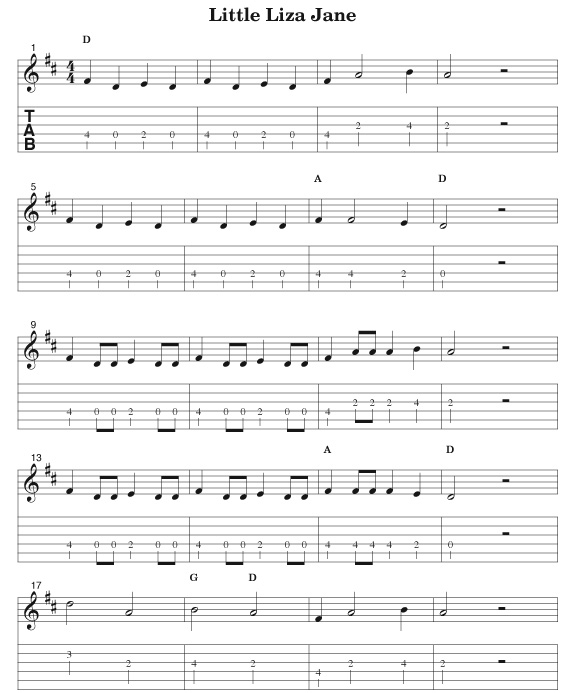Free Monthly Newsletter Lesson - July 2008
Examining Proper Down-Up Picking Technique Part 1 and "Little Liza Jane"
by Mickey Abraham
Download MP3 | Download PDF
Thanks for all your great feedback on my last online lesson
“bluegrass soloing with G runs.” It is my goal to continue to bring
you the coolest tunes, most useful licks, and most essential techniques
that an aspiring flatpicker could ever want!
This month we are going to look at one of the
most important aspects of flatpicking – alternate pick stroke theory.
I feel some people are introduced to this technique in a way that is
not fully explained. I have met people that try to alternate all their
strokes when in fact not all strokes should be alternate! Only the
eighth notes should be alternated. This month is only part I of my
lesson and does not include slides, hammer-on’s, triplets, or any other
ornamentations.
Pick direction is one of the things that I am
very strict about when teaching my private students. I feel proper
pick direction is essential to successful flatpicking and bluegrass
soloing. Bad picking habits can be almost impossible to break which is
why I hope I am catching you early. If not, I urge you to take the
time to look at and practice my tab examples. Use these to help you
break out of your years of incorrect right hand technique. Once you
“feel” these examples I know you will not only be a better picker but
also a better musician because you will be feeling the internal pulse
of a tune.
As with all creative art forms, there are
exceptions to the picking rule. All great players have there own way
of getting their music out. Tony Rice’s cross-picking is not an exact
science. But, if you are one of those players who feels you have
neglected to fully work out your right hand technique, you may want to
follow this lesson exactly. What I’m saying is don’t break the rules
until you know the rules and have surveyed the “correct” options.
Here’s how it works:
Almost all flatpicking songs have four beats in one measure –
1 2 3 4
Down Down Down Down
Now look at the first measure of the
tab. Try playing the second fret of the G string four times evenly
with four downstrokes. Down, Down, Down, Down. These are called
quarter notes. You can even say out load “Down, Down, Down, Down” as
you strike these four notes!
Notice that every time you get ready for
another downstroke your hand has to come back up (it’s actually
impossible to play consecutive downstrokes on the same string without
your hand coming back up in the process). If we were to play that same
note on the way back up we would have something like this –
1 & 2 & 3 & 4 &
D U D U D U D U
We still have four beats in this measure
but we call these notes eighth notes because we can fit eight of them
in one measure. One great exercise is to play four quarter notes
followed by eight eighth notes over and over again. First “Down, Down,
Down, Down” and then, “Down/Up Down/Up Down/Up Down/Up.” To be
effective you must do this without speeding up or slowing down.
Now, what if we did not hit the note on
the way down but did hit it on the way up? We would have something
unusual like this –
1 & 2 & 3 & 4 &
U U U U
When playing real songs you will
encounter many different rhythms. Play each of my examples eight times
to feel the groove and pick direction of these sample rhythms. Every
melody you encounter will have a unique order of notes but the pick
stroke theory will remain the same – you will be going down on beats
1,2,3, and 4 and going back up if the note lands on one of the
&’s. I have included tabs to the great old-time tune, “Little Liza
Jane” so you can practice pick theory in a real song situation.
Once again I encourage you to email with
any questions, comments, and concerns about this lesson, past lessons,
or offer suggestions regarding lessons you’d like to see in the
future. My email is [email protected]



|